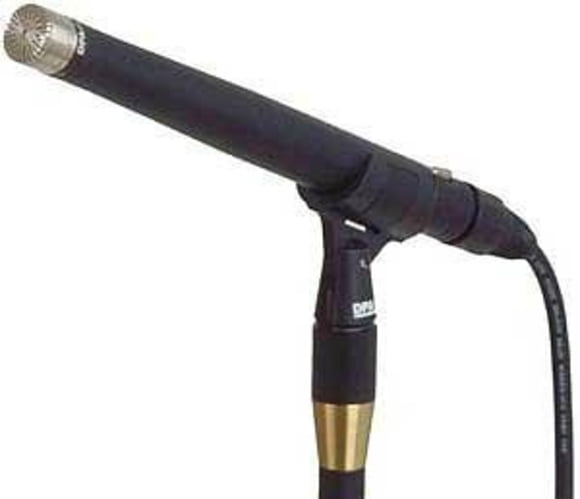3. Microphones
Dynamic or Condenser?
With the acoustic guitar, condenser mics will almost always give a better result. The guitar has a very wide frequency range, from just above 80Hz right to the end of the audible spectrum, and the higher frequencies must be reproduced accurately in order to preserve the harmonic content which gives the instrument its character. Having said this, there are a very few dynamic mics, such as the Sennheiser MD441 and Beyer M201 which give a fairly flat response across the frequency range. Other dynamics and also ribbon mics can sometimes be useful where a very relaxed or fat sound is required - in this case its particularly important to use a high quality pre-amp in order to achieve results that approach the dynamic range and low noisefloor of a good quality condenser.
Large or Small Diaphragm?
Small diaphragm condensers tend to have a more accurate and neutral sound than large diaphragm designs, which are often optimised for the human voice. Small diaphragms by definition have better phase coherence which helps the guitar to sit in the mix more easily. Ultimately this choice is governed by the arrangement being recorded - a solo guitar track or guitar and vocal recording can often benefit from the warmth of a large diaphragm mic, while many pop tracks, which tend to use acoustic guitar as a mainly percussive element, are best made using a small diaphragm mic.
These are generalisations, of course. As with any other aspect of recording, personal experience and experimentation play a vital role. An open-minded engineer will often try various mics while setting up a session, or even change mics between takes if their initial choice just isnt working.
Response Pattern
The directional response pattern of a microphone can have a big effect on the sound achieved. The guitar sound we hear from across a room radiates from the instruments entire top, and even directly from the strings. Pointing a highly directional mic at any one point will generally result in a sound focused on one part of the frequency spectrum at the expense of others. A standard cardioid response generally gives much better results than hyper/supercardioid, and a wide cardioid pattern can be even better, but is usually found only on expensive large diaphragm mics.
An omnidirectional response can also yield excellent results, though its use tends to be restricted to professional studios as room ambience will be faithfully captured as well as the guitar itself. On the other hand, bass response tends to be flatter, as close miking with any other type of mic will accentuate the bottom end to some extent. As a general rule, the more directional the microphone, the greater the ideal distance.
Mono or Stereo?
Until recently, recording sessions were limited by the number of tracks available, from the four-track machines used on most of the Beatles catalogue, to the 48-track digital machines found in large studios in the Eighties and Nineties. Nowadays, most home-based project studios can comfortably record many more than 48 tracks, and there is therefore always a temptation to record everything in stereo. While this can produce a big sound that sounds great on its own, a mono guitar track will often sit more easily in a busy mix. The nature of the music will therefore play a large part in this decision.


